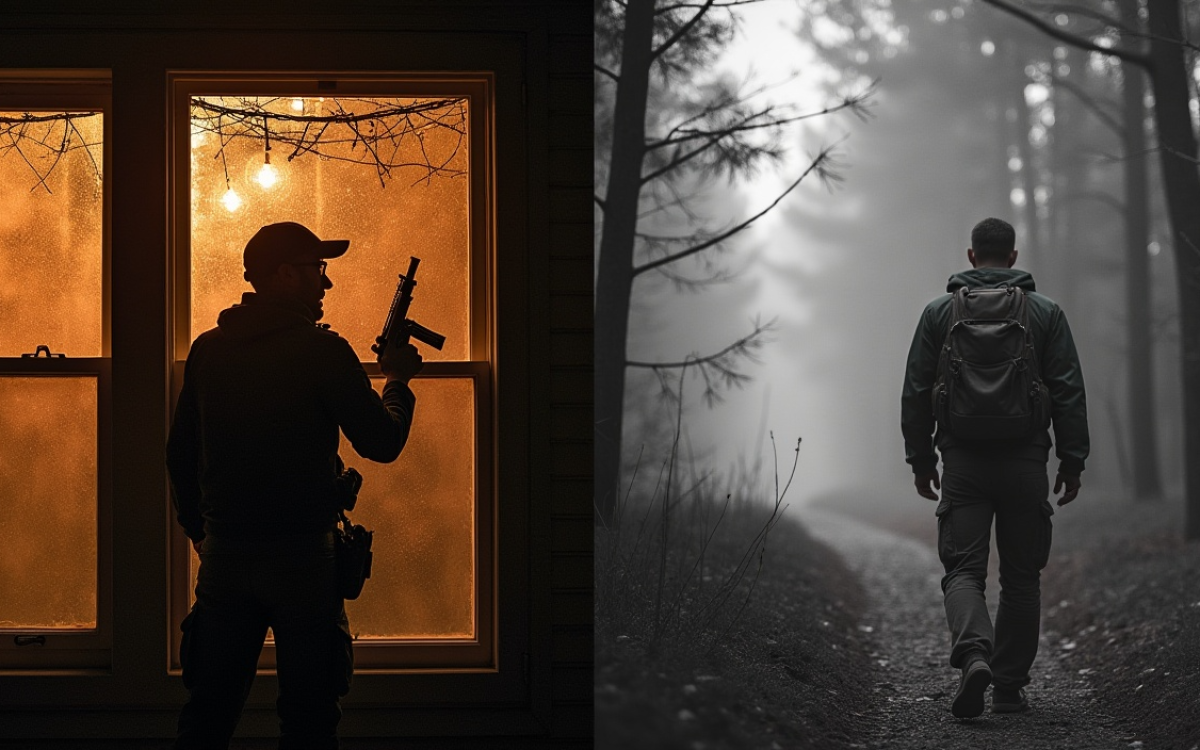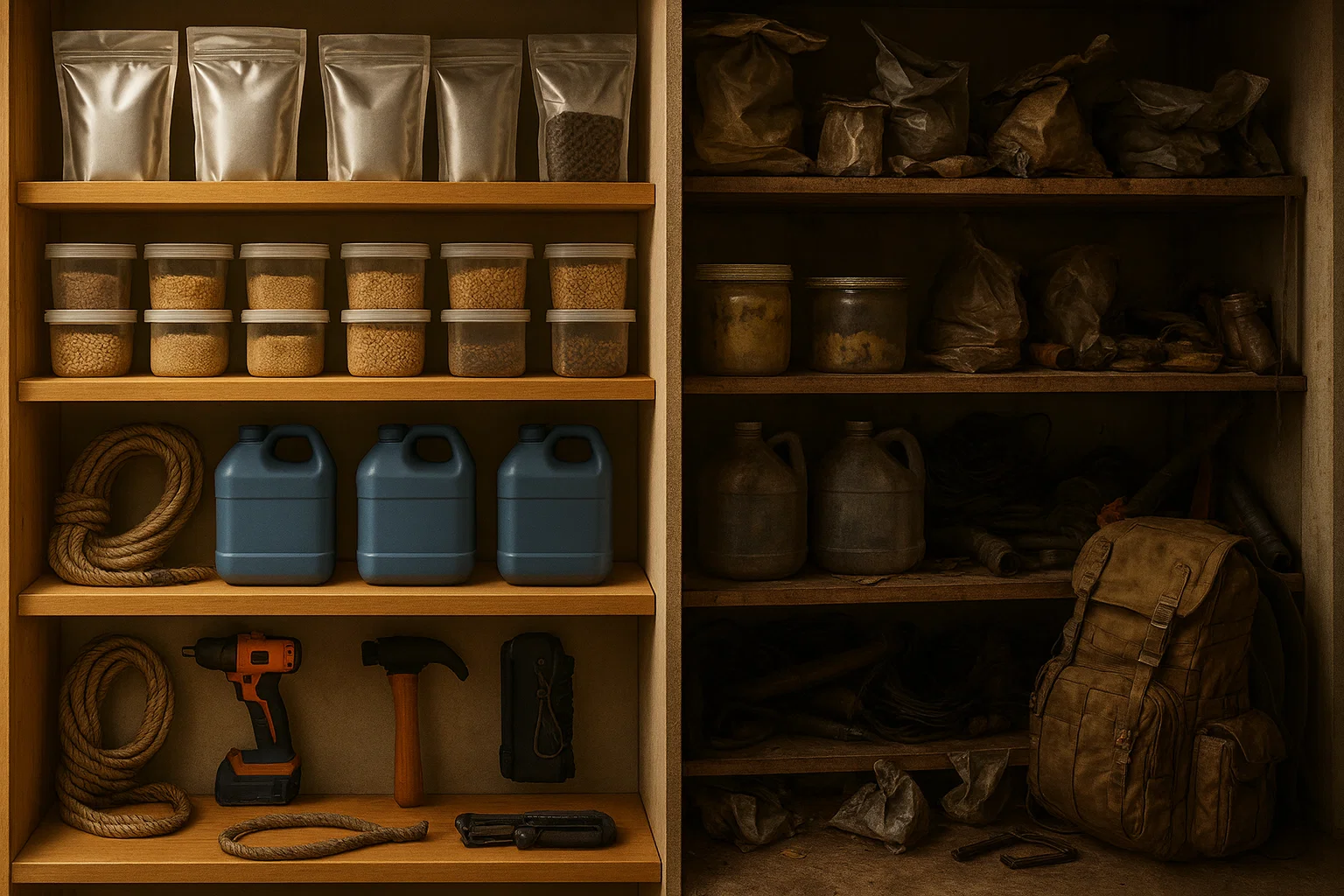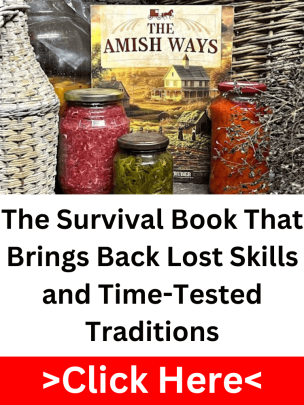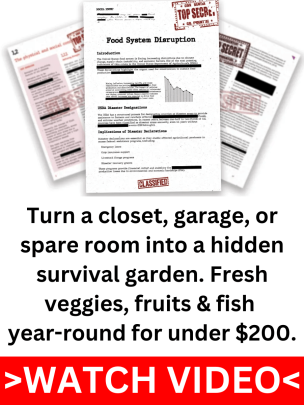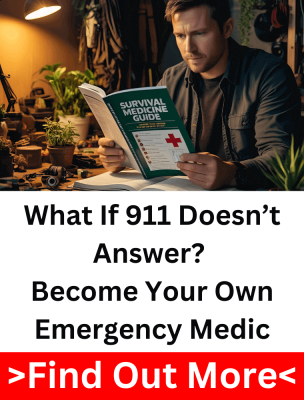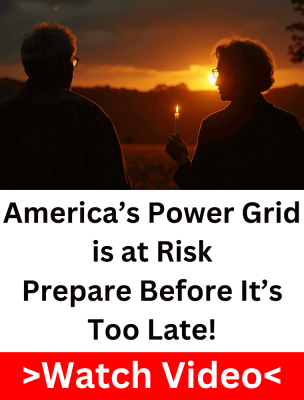The electricity goes out, throwing your home into darkness. Your phone’s emergency alarm goes off, civil unrest has broken out, and law enforcement is overwhelmed. You hear shouting in the distance, glass smashing, and sirens blaring. As you look out the window, your heart rate increases. People are freaking out. The stores are being searched. A fire broke out just a few blocks away.
You’ve prepared for this moment. But now comes the real decision: do you bug in and fortify your home, or grab your bug-out bag and disappear before chaos spreads to your doorstep?
This is the bugging out vs staying put debate that every prepper faces. Some believe in locking down, hunkering in, and defending their home with a well-stocked supply cache. Others argue that staying in one place makes you a target, and the only way to survive a major collapse is to get out before the real danger begins.
The truth is, neither option is foolproof. Bugging in gives you shelter, supplies, and security, but what if your home is no longer safe? Bugging out allows you to escape immediate threats, but what if you’re heading straight into a worse situation? Making the wrong choice at the wrong time could be a death sentence.
Staying Put
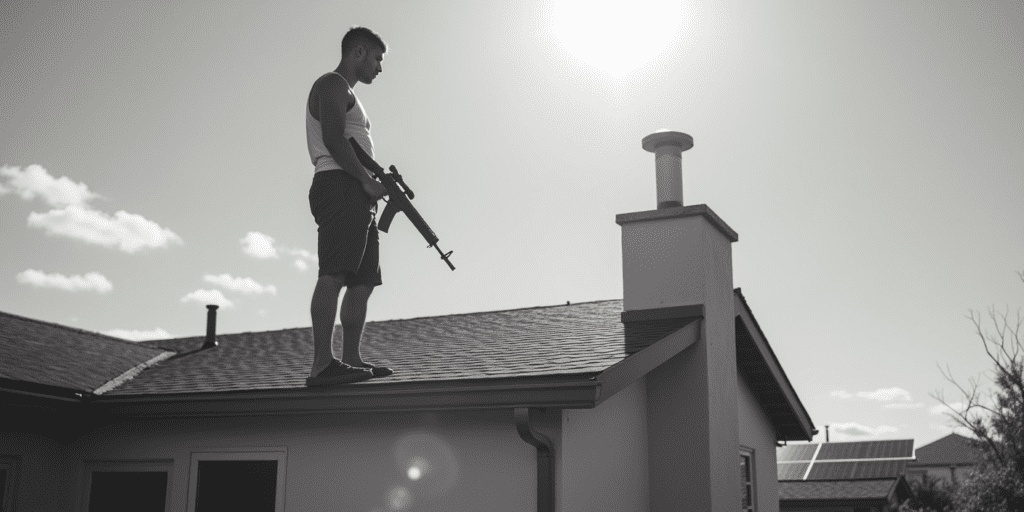
For most preppers, staying put is the default survival strategy. Your home is your fortress, a place where you control the environment and know every entry point, every blind spot, every resource available to you. Unlike bugging out, where you’re at the mercy of the road, the weather, and whatever dangers are out there, bugging in allows you to rely on what you’ve already built.
Staying put also means you don’t have to carry everything on your back or gamble on whether you’ll find a safe place to stay. If you’ve spent years stockpiling supplies, reinforcing your home, and planning for a crisis, why leave all that behind? Bugging in is the smarter choice, until it isn’t.
Relatable Article: 6 Ways to Protect Your Home from Looters During a Blackout
The biggest benefit of staying put is security, if your home is properly defended. Reinforcing doors and windows, setting up early warning systems, and having a plan for potential intruders can make your house a stronghold rather than a target. The key is not looking like an easy mark, if desperate people realize you have supplies, they will come for them.
Beyond security, staying put means you have immediate access to your food, water, and medical supplies, critical resources that can make or break your survival. You don’t have to risk scavenging or hope you’ll find what you need on the road. Hunger and dehydration take out more people in long-term disasters than anything else, and if you’ve built a solid emergency stockpile, you have an incredible advantage over the unprepared. Discover the smartest way to build and maintain a survival food reserve so you never have to worry about running out when it matters most.
There is also a psychological advantage to staying put. Survival is more than simply physical. It is also mental. The longer a crisis persists, the more difficult it is to maintain focus, motivation, and calm. Being in a familiar environment boosts morale, especially if you have family members relying on you. The uncertainty of bugging out, never knowing where you’ll sleep, what you’ll eat, or who you’ll meet, can wear down even the most tenacious survivalists.
But staying put is only as safe as the people around you. The biggest threat isn’t just the crisis itself, it’s other people. When supplies run low and food becomes scarce, your home could become a target.
A prepper I know, let’s call him Jake, had a year’s worth of supplies and thought he was ready for anything. He had a fortified home, weapons, and everything he needed to stay put long-term. What he didn’t count on? His neighbors.
Other Article: What the Amish Know About Economic Survival That You Don’t
At first, they just asked for help. Then they started demanding it. By day five, they were knocking on his door every few hours. By day ten, someone tried to break into his garage. That’s when he realized: being the only prepared person in an unprepared community is a dangerous position to be in.
Beyond security threats, there are logistical concerns. If the grid goes down, so do your utilities. Without a reliable way to filter water, store food long-term, and dispose of waste, your home could become unlivable. Do you have off-grid sanitation plans? A way to get clean drinking water once your stored supply runs out?
And finally, there’s the long-term survival question. Staying put works for short-term disasters, but what if things don’t go back to normal? What if law enforcement collapses, the supply chain never recovers, or your area turns into a warzone? Can you afford to stay isolated for months or even years?
If you’re going to stay put, you need to harden your home against every possible threat. Most people think stockpiling food is enough, but if you can’t defend what you have, you won’t keep it for long.
Many preppers focus on stockpiling supplies but overlook the one thing that could determine their survival, home defense. If your home isn’t properly secured, all your prepping could be for nothing. Discover the battle-tested strategies that experienced survivalists use to reinforce entry points, create layered security, and keep intruders out. When things go south, make sure your home is a stronghold, not a target.
But what if staying put isn’t an option? That’s when you need to think about bugging out.
Bugging Out
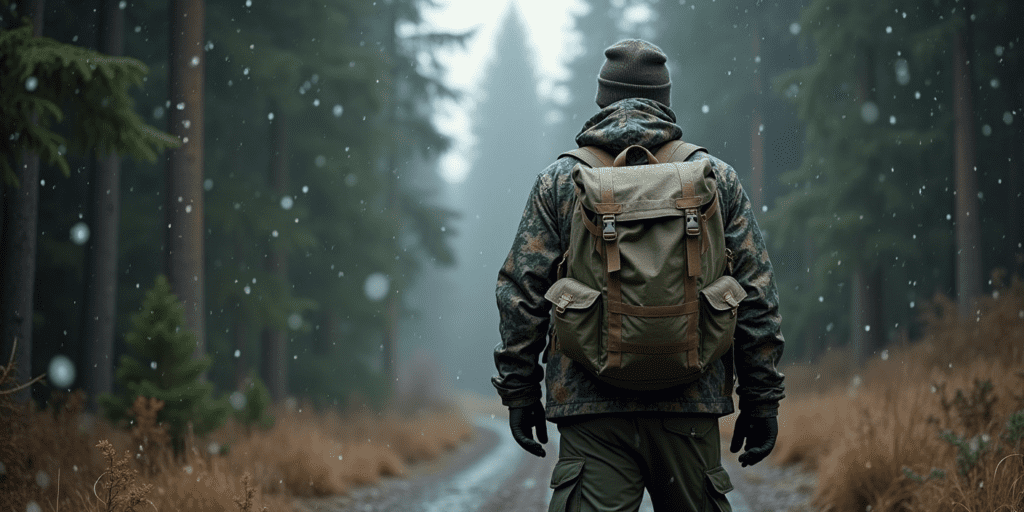
Bugging in is the ideal scenario, until it isn’t. If your home is compromised, under attack, or completely unsustainable, then staying put becomes a death trap. At that point, you don’t have a choice, you have to leave. The problem is, if you wait too long, your options shrink fast.
Bugging out is more than just leaving your home; it’s about getting ahead of the turmoil before it consumes you. Staying put is no longer an option if a wildfire is raging in your area, rioting has transformed your neighborhood into a warzone, or a flood is on its way and roads are closing. The key to survival is not just having a bug-out strategy, but also knowing when to utilize it.
The biggest advantage of bugging out is mobility. If you leave before things collapse completely, you can position yourself somewhere safer, away from looters, riots, and collapsing infrastructure. Cities can turn into death traps in a long-term disaster. Knowing how to escape dangerous urban zones before it’s too late can make all the difference. If food and water stop flowing, law enforcement breaks down, or utilities fail, those who stay behind will become desperate and dangerous.
Getting to a well-prepared bug-out location could mean the difference between survival and disaster. A rural retreat, a family cabin, a secluded safe house, if stocked properly, these places can provide what cities no longer can: fresh water, wild game, firewood, and isolation from desperate people. The farther you are from urban chaos, the better your chances of avoiding violence and shortages.
But let’s be real, bugging out isn’t as simple as packing a bag and heading into the woods. The biggest mistake preppers make? Thinking they’ll just hike to safety.
I met a guy once, he was convinced he could hike 20 miles a day with his bug-out bag if things went south. But when he tried it for real? He barely made it 5 miles before exhaustion set in. A 50-pound pack, no food, no shelter from the rain, it broke him. And that was without the added stress of actual danger.
Other Article: The Survival Lessons Special Forces Don’t Want You to Know
This is why bugging out must be planned and practiced. Do you know where you’re going? Can you get there without roads? What’s your backup plan if your primary route is blocked? Too many preppers assume they’ll just “head for the hills”, but if you don’t have a well-prepared bug-out location, you’re not a survivalist, you’re a refugee.
And then there’s the issue of exposure. Out on the road, you’re at the mercy of the weather, exhaustion, and other desperate people. If you’re trying to survive in cold, blazing heat, or pouring rain, every small mistake adds up fast. Your shelter, your water, and your ability to stay hidden become life-or-death factors.
How to Know When to Bug Out

Here’s a simple three-question test to help you decide if it’s time to leave:
- Is my home immediately threatened? (Fire, flood, rioting, government collapse)
- Will staying put expose me to unavoidable danger? (No water, no power, no law enforcement)
- Do I have a secure, reachable bug-out location? (Not just “the woods”, a real, stocked place)
Best Bug-Out Locations
- 50+ miles away from major cities, you need real distance from urban collapse.
- Near a fresh water source, because carrying water long-term is impossible.
- Defensible with cover, open farmland makes you a sitting duck. Look for forested areas or cabins with low visibility.
- Stocked ahead of time, if you have to find food and supplies once you arrive, you don’t have a real plan.
Building a Survival System
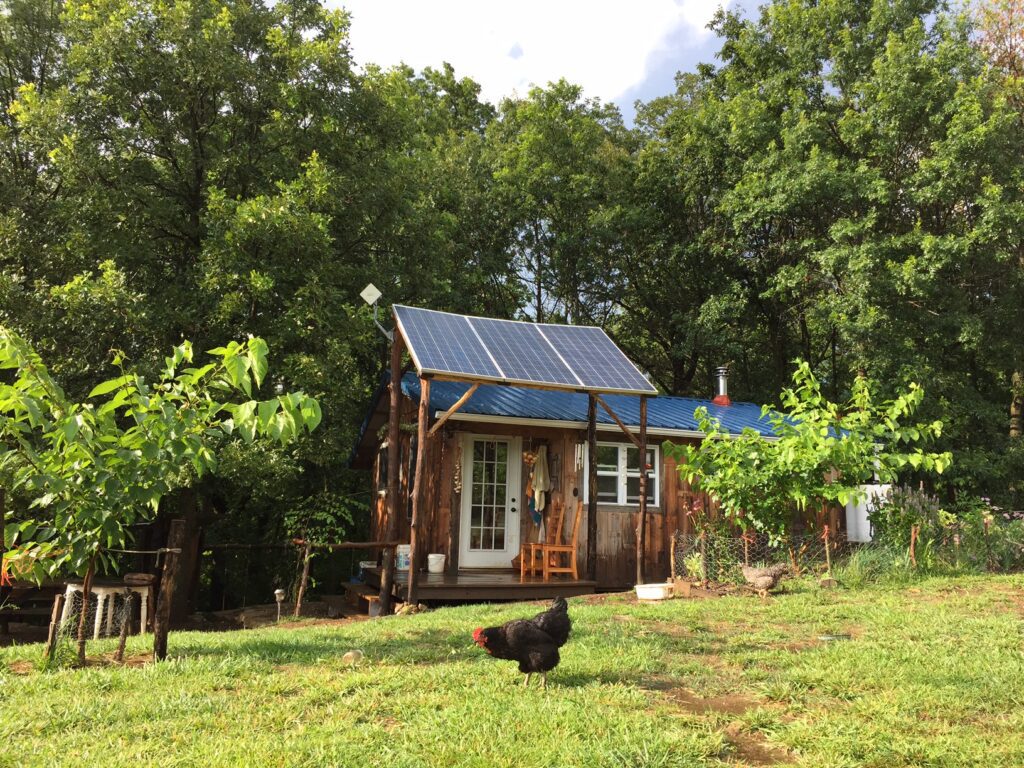
Here’s the hard truth: no matter how well you prepare, your supplies will run out. If you’re planning to bug out, you need a long-term survival system, not just a temporary escape.
That’s why mastering self-sufficiency is key. If you want to break free from dependence on stores and supply chains, you need a survival system that works no matter what. Learn how to build a self-sustaining food supply, secure clean water, and create an off-grid lifestyle that keeps you alive when society breaks down.
Bugging out isn’t for everyone, and it isn’t for every situation. But if done correctly, it can save your life. The question isn’t just “Should you stay or go?”, it’s “Are you ready for both?”
Because when disaster strikes, you won’t get to choose twice.
There’s no one-size-fits-all answer to the bugging out vs staying put debate. The best choice depends on the threat, your preparedness, and your location. A hurricane tearing through your town? Bugging out might save your life. But if the crisis is civil unrest or a power grid failure, staying put with your supplies might be the safest option.
The smartest preppers aren’t tied to just one plan, they adapt. They have a fortified home with security measures, food, and water for the long haul, but they also have a well-planned escape route and a stocked bug-out location for when staying put is no longer an option. The worst thing you can do is assume you’ll always have a choice.
Because having a plan isn’t enough, knowing how to execute it is what matters. If you want to be truly prepared for any crisis, check out this for real-world strategies used by survivalists. It covers the practical steps you need to take to be ready for both bugging in and bugging out, making sure you’re not just another unprepared target when disaster strikes.
The best survivalists don’t just plan for one scenario, they master both. You need to have your home locked down and a solid exit plan if things go south. Take the time today to review your strategy. When the time comes, you won’t get a second chance.

